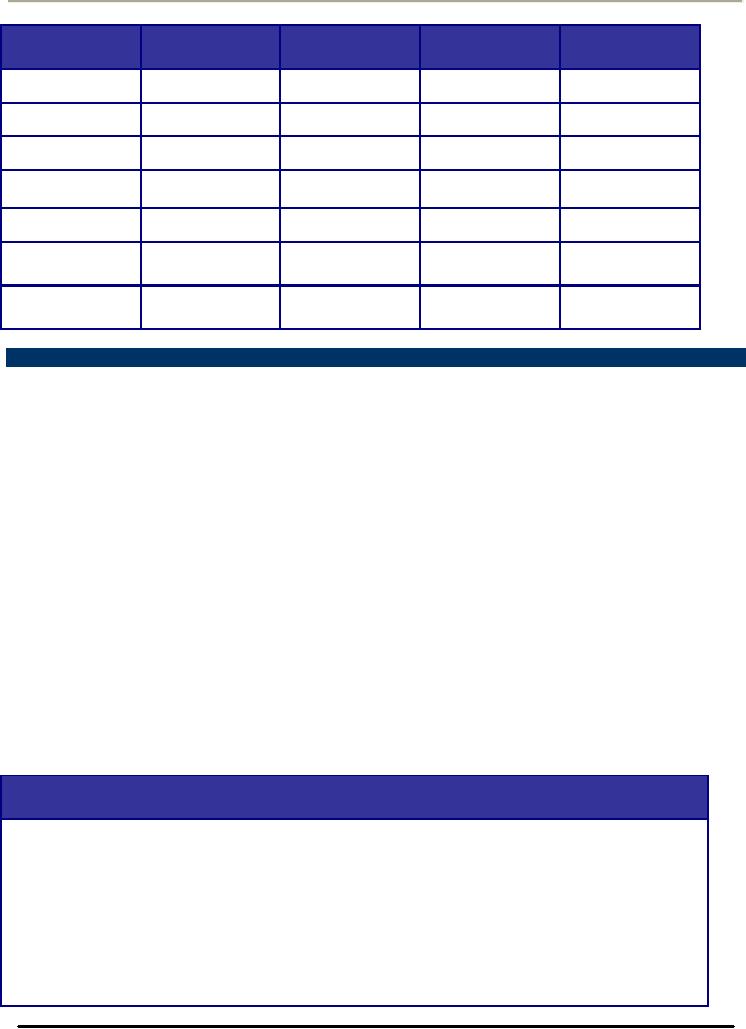 |
QUANTITATIVE RESEARCH DESIGNS & DATA COLLECTION METHODS |
| << MAJOR STEPS IN CONSUMER RESEARCH PROCESS:Design of Primary research |
| QUANTITATIVE RESEARCH DATA COLLECTION TECHNIQUES:ATTITUDE SCALES >> |

Consumer
Psychology (PSY -
514)
VU
Lesson
08
QUANTITATIVE
RESEARCH DESIGNS &
DATA
COLLECTION METHODS
OBJECTIVES:
UNDERSTANDING
QUANTITATIVE
RESEARCH DESIGNS
Surveys
Personal
Interview Surveys
Telephone
Surveys
Mail
Surveys
Online
Surveys
DATA
COLLECTION INSTRUMENTS
Reliability
& Validity
Questionnaires
If
researchers wish to ask
consumers about their
purchase preferences and consumption
experiences they can do
so:
In
person
By
mail
By
telephone
On-line
1.
Types of Surveys
1.
Personal Interview Surveys
Most
often take place
at:
·
Home
·
Retail shopping areas (Mall
Intercepts)
The
later referred to as Mall
Intercepts are
used more frequently than
home interviews because of
·
High
incidence of not at home
working women
·
Reluctance
of people to allow a stranger in their
home
2.
Telephone Surveys
Process
Questionnaires
are carefully drafted and interviewers
are briefed on the calling techniques to
engage the
respondents
on the telephone. Interviewers build
rapport with the respondents
and questions are asked
and the
responses
are noted on the answer
sheets. Answer sheets are
with the interviewer who
marks the respondents'
choices.
Answer sheets could be paper
based or electronic computer based
Appropriate
Timings
Evenings
and weekends are appropriate
times, however, in Pakistan a large
number of females are housewives
so
the
time after the breakfast and before the
ladies start preparing for
lunch could also be
available
Difficulties
involved in Telephone
Interviews
Increased
use of answering machines
makes it difficult to reach the
respondents. Caller ID facility on the
phone to
screen
the calls sometimes plays a
hampering role in getting down to the
respondents. The situation is
made more
complicated
by the limited timings during which the
respondents can be reached.
Reluctance from
respondents
22

Consumer
Psychology (PSY -
514)
VU
may
be faced to get them on the on telephone
for calls that interrupt
their general relaxation or TV viewing
or
running
other house-hold cores time.
Some
Marketing Research companies
have tried to automate the telephone
interviews. The find respondents
are
even
less willing to interact with an
electronic voice than with a live
interviewer
3.
Mail Surveys
Process:
Mailing
Surveys are conducted by
sending the questionnaires directly to
individuals at their homes.
The
questionnaire
is properly drafted so that
respondents won't have any
difficulty in understanding the
questions
and/or
how to mark the
responses
Difficulties:
To
understand the difficulties involved in
mailing surveys you may
consider the question, what will be
your
response
if you get a questionnaire by
mail? Will you read it
fill it and then put it in
an envelope and send it
back
through
mail? Chances are a lot of
people out there will not be
willing to engage in any
such exercise. Exactly the
same
way the response rate for
the mailed questionnaires is very
low
Firms
use various ways to increase
the response rate that
include:
·
Enclosing
a self addressed stamped
envelope
·
Asking
provocative questions
Sending
pre-notification letters and
follow-up notes
Setting
up Panels of consumers
Panels
of consumers are sometimes
set up in which a token fee
is sometimes paid to the respondents for
filling out
the
questionnaires. Research companies
regularly send surveys to panel
members. Sometimes the panel
members
are
required to keep diaries of their
purchases
4.
On-line Surveys
Process:
After
the widespread adoption of internet in
personal life-styles, research
companies use this medium
frequently
to
conduct their surveys. Research
companies frequently send
their questionnaires to respondents on
their e-mail
addresses.
Respondents are also
directed to the research firm or the
product company's web sites
through internet
ads.
Difficulties:
Difficulties
in on-line surveys
involve:
·
Low response
rates
·
Sample is self selected
and therefore cannot project large
population
Solutions:
·
Most
computer polls ask respondents to
complete a profile consisting of
demographic questions
·
Questions
about respondents age,
locations, academic backgrounds,
etc...
·
These
questions enable the researchers to
classify the responses to the substantive
product or service
·
Paying
the respondents
·
Respondents
go on filling the questionnaires and they
get paid for every
questionnaire they fill
Benefits
of On-line Polls
Certain
benefits attached with on-line
polling may include:
·
Anonymity - that encourages
respondents to be more forthright
and honest
·
Internet polls are wide
reaching
·
Cost effective
23

Consumer
Psychology (PSY -
514)
VU
5.
Comparative Advantages/Disadvantages Mail, Telephone,
Personal Interviews and On-line
Surveys
Mail
Telephone
Personal
On-Line
Interview
Cost
Low
Moderate
High
Low
Speed
Slow
Immediate
Slow
Fast
Response
Rate
Low
Moderate
High
Self
Selected
Geographic
Excellent
Good
Difficult
Excellent
Flexibility
Interviewer
Bias
N/A
Moderate
Problematic
N/A
Interviewer
N/A
Easy
Difficult
N/A
Supervision
Quality
of
Limited
Limited
Excellent
Excellent
Response
2.
Data Collection Instruments
Data
collection instruments are developed as
part of study's total
research design to systematize the
collection of
data
and to ensure that all
respondents are asked the
same question and in same fashion.
Two concepts are
important
in this regard
Reliability
A
study is reliable if the same question
asked of a similar people will
produce the same findings.
Often a sample is
systematically
divided into two halves;
each half is given the same questionnaire
to fill. If the results from
each half
are
same result is said to be reliable.
This way the questionnaire is
said to have split-half
reliability
Validity
A
study is valid if it does collect the
appropriate data needed to answer the
questions or objectives stated in
the
first
stage of the research
process.
Quantitative
Data Collection Instruments include:
·
Questionnaires
·
Attitude
Scales
1.
Questionnaires
For
quantitative research, primary data
collection instrument is the questionnaire.
Following ar some
important
guidelines
that need to be considered
while wording questions in a
questionnaire:
Guidelines
for Wording
Questions
1.
Avoid
Leading Questions.
a.
Do you often shop at
such cost saving shopping
stores as ............
b.
Weren't you satisfied at the service
you received at ........................
store today
2.
Avoid
two questions in one
a.
In your view did you
save good money and
received good services when
you visited ......
last
Sunday
3.
Questions
must be clear
a.
Where do you usually
shop for your home-office
supplies
The
term usually
is
vague
4.
Use
words that consumers use
routinely
24

Consumer
Psychology (PSY -
514)
VU
a.
Do
not use verb "to
rectify" use "to
correct"
5.
Respondents
must be able to answer the
question
a.
How many newspaper or TV
ads for .................... did
you read or see during the
last
week
6.
Respondents
must be willing to answer
the question
a.
Questions about money, health
issues, and personal hygiene
can embarrass
respondents
and
cause them not to answer.
Sometimes asking a question in a less
personal fashion
might
help generate more
responses.
Questionnaire
Administration
Questionnaires
may be administered by:
Field
interviewers
Through
mail
Internet
Telephone
To
Get the Response
·
Questionnaires
must be interesting
·
Objective
·
Unambiguous
·
Easy
to complete
·
Generally
not burdensome to
complete
To
Enhance the
Analysis
To
enhance the analysis and
classification of responses into
meaningful categories, questionnaires include
both:
Substantive
questions relevant to the objectives of
study
Pertinent
demographic questions
Disguised/Undisguised
Questionnaires
Questionnaire
can be disguised or undisguised as to
its true purpose
·
Disguised questionnaire sometimes
yields more truthful answers
and avoids responses that
respondents
may
think are expected or
sought
Open
Ended, Closed Ended
Questionnaire
·
Open
Ended: Requiring
answers in the respondents own
words
Yield
more insightful
information
Difficult
to analyze and code
Closed
Ended: Respondents
merely check the answers
from the available answers
from a list of options
·
The
answers are limited to the existing
insights of the researchers
Easy
to tabulate and
analyze
25
Table of Contents:
- INTRODUCTION TO CONSUMER PSYCHOLOGY:Consumer Behavior
- INTRODUCTION TO CONSUMER PSYCHOLOGY:Consumer research
- INTRODUCTION TO CONSUMER PSYCHOLOGY:Marketing Mix, Product, Price
- INTRODUCTION TO CONSUMER PSYCHOLOGY:Customer Value, Perceived Value
- VALUE AND RETENTION FOCUSED MARKETING AND CONSUMER DECISION MAKING PROCESS
- CONSUMER RESEARCH:Quantitative Research, Qualitative Research
- MAJOR STEPS IN CONSUMER RESEARCH PROCESS:Design of Primary research
- QUANTITATIVE RESEARCH DESIGNS & DATA COLLECTION METHODS
- QUANTITATIVE RESEARCH DATA COLLECTION TECHNIQUES:ATTITUDE SCALES
- QUALITATIVE RESEARCH DESIGNS & DATA COLLECTION METHODS
- CUSTOMER SATISFACTION MEASUREMENT, SAMPLING, AND DATA ANALYSIS AND REPORTING
- MARKET SEGMENTATION AND ITS BASES:Geographical Segmentation
- BASES FOR SEGMENTATION: DEMOGRAPHIC SEGMENTATION PSYCHOGRAPHIC SEGMENTATION
- BASES FOR SEGMENTATION: SOCIOCULTURAL SEGMENTATION USE RELATED SEGMENTATION USAGE SITUATION SEGMENTATION
- BASES FOR SEGMENTATION: BENEFIT SEGMENTATION:Intrinsic Cues
- BASES FOR SEGMENTATION: HYBRID SEGMENTATION STRATEGIES
- MARKET SEGMENTATION IMPLEMENTING SEGMENTATION STRATEGIES ENVIRONMENTAL INFLUENCES CULTURE
- HOW CULTURE IS LEARNT ENVIRONMENTAL INFLUENCES:Formal Learning
- CULTURE AND ITS MEASUREMENT ENVIRONMENTAL INFLUENCES
- MEASUREMENT OF CULTURE ENVIRONMENTAL INFLUENCES:Consumer Fieldwork
- SUBCULTURE CHAPTER 4: ENVIRONMENTAL INFLUENCES
- AGE AND GENDER SUBCULTURE CHAPTER 4: ENVIRONMENTAL INFLUENCES
- BASES FOR SEGMENTATION: BENEFIT SEGMENTATION:Market Segmentation
- SOCIAL CLASS CHAPTER 4: ENVIRONMENTAL INFLUENCES:Occupation
- CONSUMER SOCIAL CLASSES CHAPTER 4: ENVIRONMENTAL INFLUENCES:Affluent Consumer
- CONSUMER SOCIAL CLASSES CHAPTER 4: ENVIRONMENTAL INFLUENCES:Membership Group
- CONSUMER SOCIAL CLASSES CHAPTER 4: ENVIRONMENTAL INFLUENCES:Shopping Groups
- UNDERSTANDING PERSONALITY CHAPTER 5: INDIVIDUAL DETERMINANTS OF CONSUMER BEHAVIOR
- CONSUMER PERSONALITY, TRAIT THEORY AND SELF IMAGES
- CONSUMER MOTIVATION:Needs, Goals, Generic Goals
- UNDERSTANDING LEARNING:Intentional and Incidental Learning, Implications for Marketers
- INSTRUMENTAL CONDITIONING, INFORMATION PROCESSING AND MEMORY
- ATTITUDES:Characteristics of Attitudes, Attitudes have consistency
- ATTITUDE FORMATION AND CHANGE:How attitudes are learned?
- ATTITUDE CHANGE STRATEGIES:Resolving two conflicting attitudes
- INTRODUCTION TO CONSUMER DECISION MAKING:Decision Complexity
- Problem Recognition, Search and Evaluation and Decision and Purchase
- Decision and Purchase:Consumer Decision Rules, Output, Relationship Marketing
- Decisions Related to Post Purchase:Product Set up and Use
- Marketing Implications of Decisions Related to Post Purchase:Understanding
- Post Purchase Evaluation:Determinants of Satisfaction, Consumer Complaint Behavior
- Post Purchase Dissonance:Dissonance Reduction, Marketing Implications
- Consumerism:Roots of Consumerism, The Nature of Consumerism
- Consumerism – Issues and Responses:Environmental Concerns, Consumer Privacy
- Review – Consumer Psychology Course:Consumer Research, Consumerism